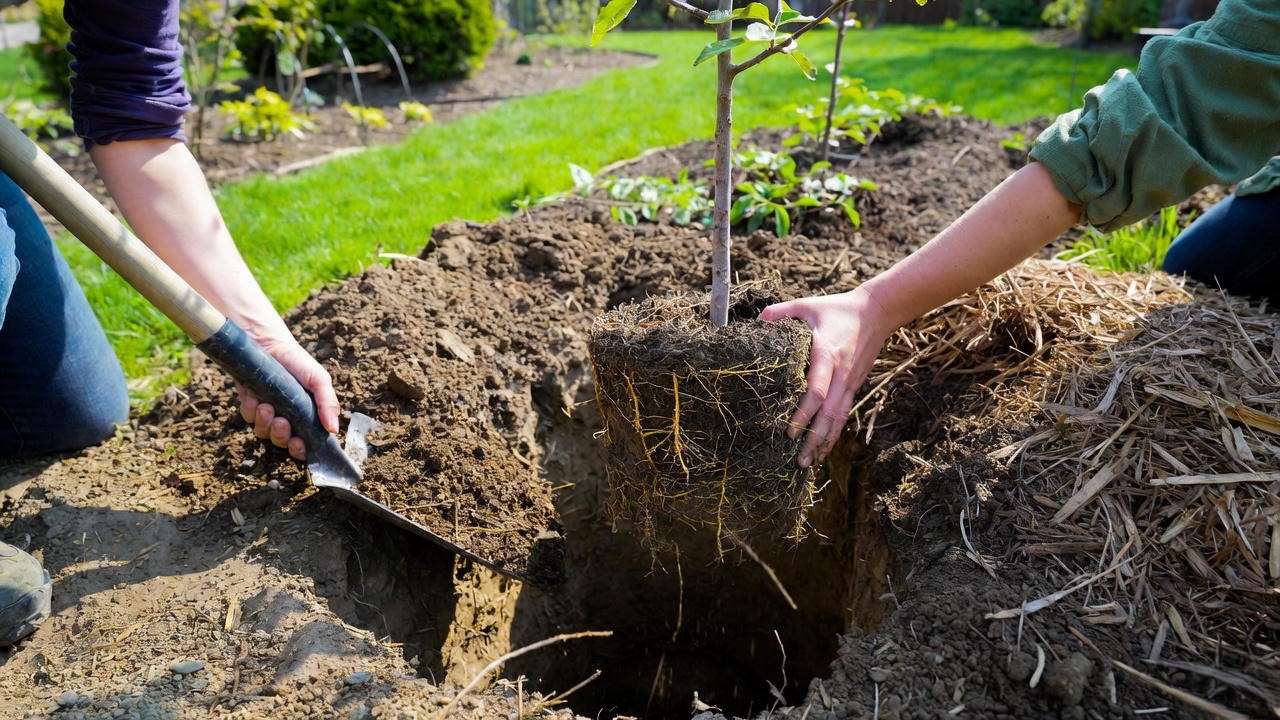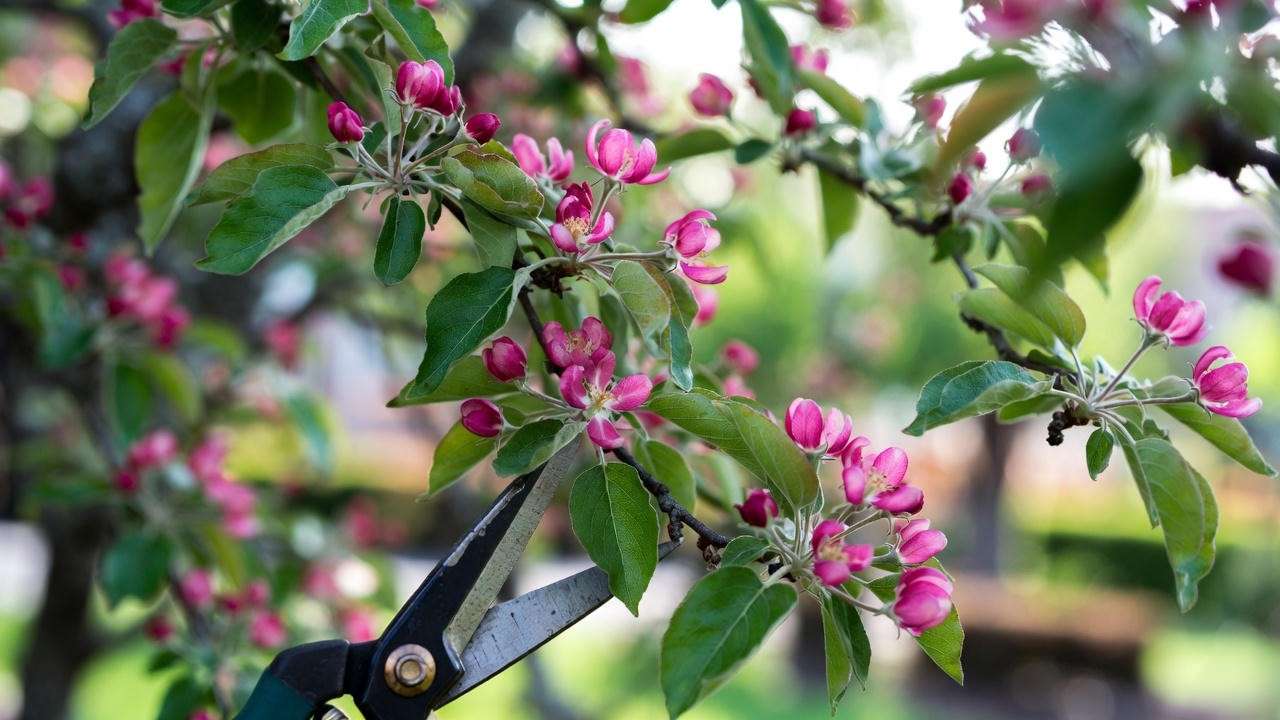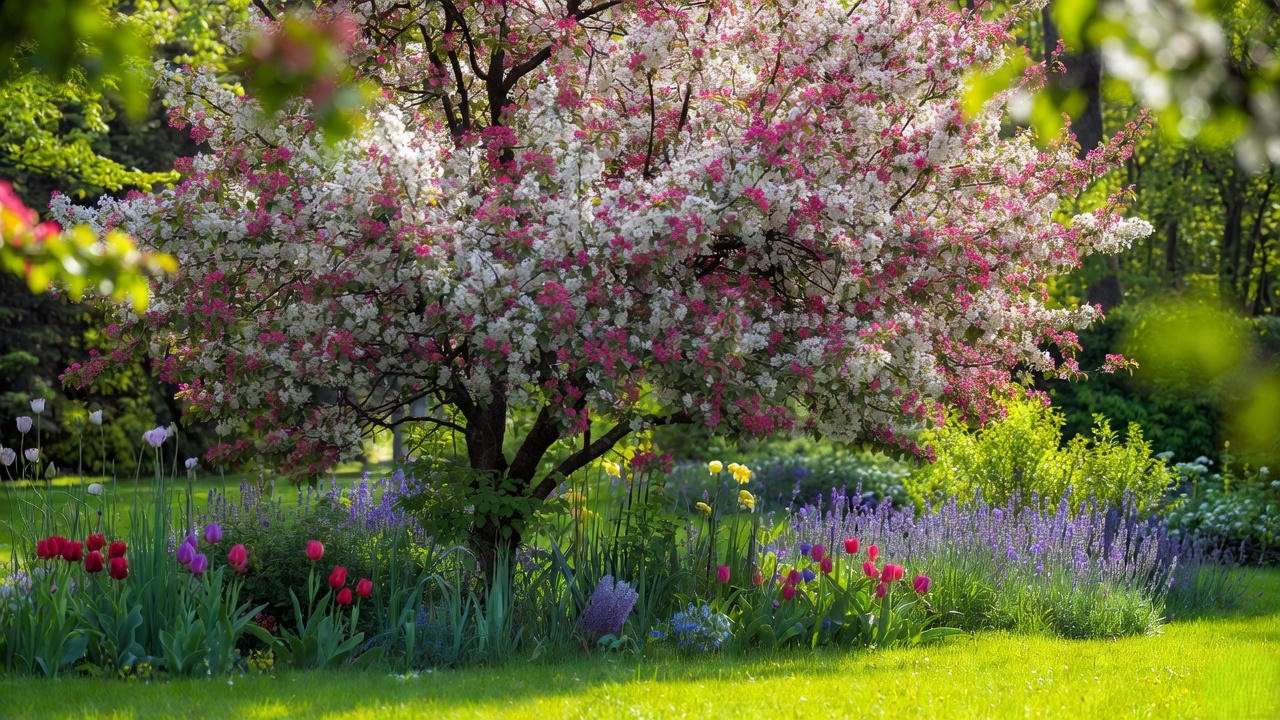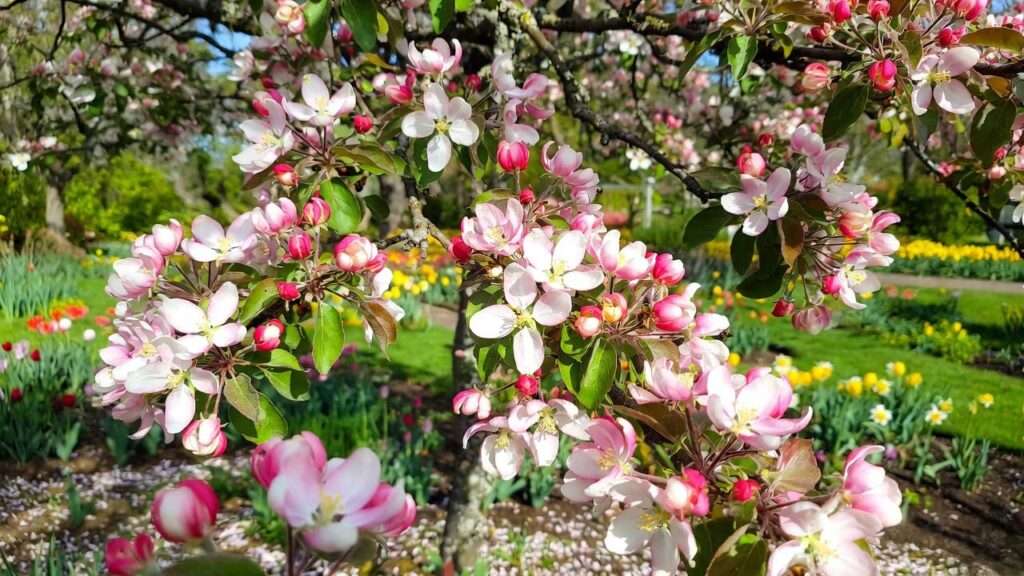Picture your garden transformed into a springtime masterpiece, with clouds of pink and white blooms stealing the show and drawing every eye in the neighborhood. A blooming crabapple tree can make this vision real, delivering breathtaking beauty, wildlife benefits, and even edible fruit with surprisingly little effort. But to unlock its full potential, you need the right know-how. In this comprehensive guide, I’ll share expert-backed tips—drawn from over a decade of horticulture experience—to help you select, plant, and care for a crabapple tree that thrives for years. Whether you’re a novice gardener or a seasoned landscaper, you’ll find actionable advice to grow a stunning tree that bursts with vibrant spring blossoms. Let’s dig in! 🌱
Why Choose a Blooming Crabapple Tree? 🌟
Crabapple trees (genus Malus) are a favorite among gardeners for their unmatched charm and versatility. With the right care, these trees deliver a spectacular show of flowers, fruit, and foliage that elevates any landscape. Here’s why a blooming crabapple tree deserves a spot in your garden.
Aesthetic Appeal and Seasonal Beauty
Nothing rivals the springtime splendor of a crabapple tree in full bloom. Depending on the variety, you’ll enjoy cascades of white, pink, or red flowers that create a fairy-tale effect. Come fall, colorful fruit—ranging from cherry-red to golden-yellow—adds a second act of beauty, while textured bark and graceful branches shine in winter. For example, the ‘Prairifire’ cultivar dazzles with deep pink blooms and ruby-red fruit that persist into late fall, making it a year-round stunner. 🌸🍎
Ecological Benefits
Beyond aesthetics, crabapple trees are ecological powerhouses. Their nectar-rich blooms attract pollinators like bees and butterflies, boosting your garden’s biodiversity. In fall, the fruit provides a feast for birds, from cedar waxwings to robins. By planting a crabapple, you’re creating a haven for wildlife. Pro tip: Pair your tree with native plants like coneflowers or milkweed to amplify its ecological impact. 🐝
Versatility for Home Gardens
Whether you have a sprawling lawn or a cozy urban patio, there’s a crabapple tree for you. Dwarf varieties, like ‘Sargent’, top out at 8-10 feet, perfect for small spaces or containers. Standard trees, like ‘Indian Magic’, reach 15-25 feet, ideal for larger landscapes. Their adaptability to various soil types and climates (USDA zones 4-8) makes them a go-to choice for homeowners seeking low-maintenance beauty. Expert insight: “Crabapples offer big impact with minimal fuss, making them a top pick for busy gardeners.” 🌳
Choosing the Perfect Crabapple Tree for Your Garden 🌿
Selecting the right crabapple tree is the foundation of success. With hundreds of cultivars available, you’ll want to choose one that suits your climate, space, and aesthetic preferences. Here’s how to make an informed decision.
Understanding Crabapple Varieties
Crabapple trees come in a dazzling array of bloom colors, fruit sizes, and growth habits. Here are a few standout cultivars:
- ‘Spring Snow’: Pure white blooms, no fruit (sterile), ideal for clean landscapes.
- ‘Royal Raindrops’: Vibrant magenta flowers, deep red fruit, and excellent disease resistance.
- ‘Sugar Tyme’: Pale pink buds open to white blooms, with persistent red fruit and strong disease resistance.
- ‘Adirondack’: Compact size, white flowers, and resistance to scab and mildew.
- ‘Profusion’: Deep pink blooms and a spreading habit for dramatic effect.

| Cultivar | Bloom Color | Fruit Color | Height | Disease Resistance |
|---|---|---|---|---|
| Spring Snow | White | None | 20-25 ft | Good |
| Royal Raindrops | Magenta | Red | 15-20 ft | Excellent |
| Sugar Tyme | White | Red | 15-18 ft | Excellent |
| Adirondack | White | Orange-Red | 12-18 ft | Excellent |
| Profusion | Deep Pink | Red | 15-20 ft | Moderate |
Tip: Visit a local nursery to see mature trees in person or consult your county extension service for regional recommendations.
Factors to Consider Before Buying
Before purchasing, evaluate your garden’s conditions:
- Climate: Most crabapples thrive in USDA zones 4-8, but check your zone to ensure compatibility.
- Soil: Crabapples prefer well-drained, loamy soil with a pH of 6.0-7.0.
- Space: Consider the tree’s mature size to avoid overcrowding. Dwarf varieties need 8-10 feet of space, while standard trees require 15-20 feet.
- Sunlight: Full sun (6+ hours daily) is non-negotiable for optimal blooming. Pro tip: If you’re unsure about soil conditions, a simple soil test kit (available at garden centers) can guide your prep work. 🌞
Disease Resistance: A Must-Have
Crabapples are susceptible to diseases like apple scab (causing leaf spots), fire blight (browning branches), and powdery mildew (white coating on leaves). Choosing a disease-resistant variety saves time, money, and heartache. For instance, ‘Adirondack’ and ‘Sugar Tyme’ are bred for resilience, making them ideal for low-maintenance gardens. Expert insight: “Investing in a resistant cultivar upfront prevents years of disease management.” 🛡️
Planting Your Crabapple Tree: Step-by-Step Guide 🌱
Proper planting sets the stage for a healthy, blooming crabapple tree. Follow these steps to give your tree the best start.
When and Where to Plant
- Timing: Plant in early spring or fall, when cooler temperatures promote root establishment. Avoid summer heat or frozen winter ground.
- Location: Choose a spot with full sun, good air circulation, and well-drained soil. Avoid low-lying areas where water pools, as crabapples hate “wet feet.” Warning: Planting near other apple trees may increase disease risk due to cross-contamination. Keep at least 50 feet of distance if possible.
Preparing the Site
- Test soil: Aim for a pH of 6.0-7.0. Amend acidic soil with lime or alkaline soil with sulfur, following test kit instructions.
- Dig the hole: Make it 2x wider than the root ball but no deeper. For example, a 12-inch root ball needs a 24-inch-wide hole.
- Enrich the soil: Mix 1-2 shovels of compost or aged manure into the excavated soil to boost nutrients. Expert tip: Avoid synthetic fertilizers at planting, as they can burn tender roots.
Planting Process
- Remove the tree: Gently slide it from its container or unwrap the burlap, loosening any circling roots.
- Position the tree: Place it in the hole, ensuring the root flare (where roots meet trunk) sits level with or slightly above ground.
- Backfill: Fill the hole with the amended soil, tamping lightly to remove air pockets.
- Water: Soak the soil thoroughly to settle it around the roots.
- Mulch: Apply 2-3 inches of organic mulch (e.g., wood chips or shredded bark) around the base, keeping it 2 inches from the trunk to prevent rot.
Visual aid idea: A diagram showing proper planting depth and mulch placement would enhance understanding. Pro tip: Stake young trees in windy areas to prevent leaning, but remove stakes after one year to encourage strong roots. 🌿

Essential Care Tips for a Thriving Crabapple Tree 🌼
Once planted, your crabapple tree needs consistent care to reach its full potential. These expert tips cover watering, fertilizing, pruning, and pest management.
Watering Needs
- Young trees: Water deeply (1-2 inches) 1-2 times per week for the first year, especially during dry spells. Use a soaker hose or drip irrigation for efficiency.
- Established trees: Once rooted (after 1-2 years), crabapples are drought-tolerant but benefit from occasional deep watering during prolonged heat. Tip: Check soil moisture by digging 2 inches down; water only if dry. Overwatering can lead to root rot. 💧
Fertilizing for Healthy Growth
- When to fertilize: Apply fertilizer in early spring, just before new growth begins.
- What to use: A balanced 10-10-10 granular fertilizer or organic compost works well. For a 15-foot tree, use 1-2 pounds of 10-10-10, spread evenly under the canopy.
- Caution: Over-fertilizing promotes leafy growth at the expense of blooms. If your tree is vigorous but bloom-shy, skip fertilizer for a year. Expert insight: “Think of fertilizer as a supplement, not a meal—less is often more.” 🌱
Pruning for Shape and Health
- Best time: Prune in late winter or early spring, before buds swell, to minimize stress.
- How to prune:
- Remove dead, damaged, or diseased branches first.
- Thin crowded areas to improve air circulation, reducing disease risk.
- Shape the tree by trimming back overly long branches, maintaining a balanced form.
- Avoid cutting more than 25% of the canopy in one season. Pro tip: Use clean, sharp pruning shears and disinfect between cuts to prevent disease spread. Expert insight: “Proper pruning not only shapes the tree but also boosts bloom production by channeling energy to flower buds.” ✂️

Pest and Disease Management
- Common pests:
- Aphids: Tiny sap-suckers causing curled leaves. Control with neem oil or insecticidal soap.
- Japanese beetles: Skeletonize leaves. Hand-pick or use traps (place far from the tree).
- Spider mites: Cause stippled leaves. Spray with water or apply horticultural oil.
- Disease prevention:
- Choose resistant varieties to minimize issues.
- Ensure good air circulation through pruning and proper spacing.
- Rake and dispose of fallen leaves to reduce fungal spores. Organic solution: Introduce beneficial insects like ladybugs to control aphids naturally. Expert tip: “Early detection is key—inspect your tree weekly during the growing season.” 🐞

Maximizing Spring Blossoms: Pro Tips 🌸
The star of the show for any blooming crabapple tree is its springtime display. With a few expert strategies, you can ensure your tree produces an abundance of vibrant flowers that make your garden the envy of the neighborhood.
Encouraging Abundant Blooms
To maximize blossoms, focus on these key factors:
- Sunlight: Ensure your tree gets at least 6 hours of direct sun daily. Too much shade reduces flower bud formation.
- Nutrition: Apply a bloom-boosting fertilizer high in phosphorus (e.g., 5-10-5) in early spring. Spread 1 pound per 10 feet of tree height under the canopy.
- Pruning: Avoid over-pruning, as flower buds form on older wood. Remove only what’s necessary to maintain shape and health. Example: A single ‘Profusion’ crabapple, with proper care, can produce thousands of deep pink blooms, creating a cloud-like effect. Pro tip: Water consistently in late summer to support bud development for next spring’s show. 🌷
Companion Planting for Visual Impact
Crabapple trees shine as focal points, but companion plants can elevate their beauty. Try these pairings:
- Spring bulbs: Plant tulips, daffodils, or hyacinths at the base for a colorful understory that blooms alongside the tree.
- Perennials: Low-growing plants like catmint, lavender, or salvia add texture and attract pollinators.
- Groundcovers: Creeping phlox or ajuga creates a lush carpet that contrasts with the tree’s blooms. Design tip: Create a layered garden bed with the crabapple as the centerpiece, mid-height perennials in the middle, and groundcovers or bulbs at the edges for a polished look. 🌼

Troubleshooting Poor Blooming
If your crabapple isn’t blooming as expected, consider these common culprits and solutions:
- Too much shade: Relocate potted trees or thin nearby foliage to increase sunlight.
- Over-fertilization: Excess nitrogen promotes leaves over flowers. Switch to a low-nitrogen, high-phosphorus fertilizer.
- Improper pruning: Cutting too late in the season removes next year’s flower buds. Prune only in late winter. FAQ: “Why isn’t my crabapple tree blooming?” If problems persist, consult a local arborist for a tailored diagnosis. Expert insight: “Patience is key—young trees may take 2-5 years to reach peak blooming.” 🌿
Year-Round Crabapple Care: Beyond Spring 🌞🍂
While spring is the main event, caring for your crabapple tree year-round ensures long-term health and beauty. Here’s how to keep it thriving through every season.
Summer Maintenance
- Watering: Monitor for drought stress, especially in hot climates. Water deeply every 1-2 weeks if rainfall is scarce.
- Pest patrol: Check for aphids, beetles, or mites, and treat promptly with organic methods like neem oil.
- Mulching: Refresh mulch to maintain a 2-3 inch layer, which conserves moisture and suppresses weeds. Tip: Use a moisture meter to avoid overwatering, which can stress the tree during peak growth. ☀️
Fall and Winter Prep
- Clean-up: Rake fallen leaves and fruit to prevent fungal diseases like apple scab from overwintering. Dispose of debris rather than composting.
- Winter protection: For young trees, wrap the trunk with burlap or tree guards to shield against frost cracks and rodent damage.
- Fruit management: Harvest edible crabapples for culinary use or leave some for wildlife to enjoy. Pro tip: In snowy regions, gently shake heavy snow off branches to prevent breakage. ❄️
Using Crabapple Fruit
Many crabapple varieties produce small, tart fruits perfect for culinary creations. Here’s a quick idea:
- Crabapple Jelly Recipe:
- Wash and quarter 4 pounds of crabapples (no need to peel or core).
- Simmer in 4 cups of water until soft (about 20 minutes).
- Strain through a jelly bag to collect juice.
- Combine 4 cups of juice with 3 cups of sugar; boil until it reaches 220°F (jelly stage).
- Pour into sterilized jars and seal. Safety note: Only use fruit from known edible varieties, as some crabapples are too bitter or astringent. Fun fact: Crabapple jelly makes a delightful gift for garden-loving friends! 🍎
Common Mistakes to Avoid When Growing Crabapple Trees 🚫
Even experienced gardeners can make missteps. Here are pitfalls to steer clear of:
- Overwatering: Soggy soil leads to root rot. Always check soil moisture before watering.
- Planting in shade: Insufficient sunlight stunts blooms and weakens the tree. Choose a sunny spot from the start.
- Neglecting pruning: Overgrown branches reduce air circulation, inviting disease. Prune annually to maintain health.
- Ignoring disease signs: Yellowing leaves, black spots, or wilting branches need immediate attention. Act fast to prevent spread. Expert advice: “Regular monitoring and early intervention are the secrets to a thriving crabapple tree.” Pro tip: Keep a garden journal to track your tree’s health and care routine. 📝
FAQs About Blooming Crabapple Trees ❓
Here are answers to common questions gardeners ask:
- How long does it take for a crabapple tree to bloom? Most trees bloom within 2-5 years, depending on their age at planting and care quality.
- Are crabapple trees messy? Fruit drop can create litter, but sterile varieties like ‘Spring Snow’ or regular cleanup solve this.
- Can crabapple trees grow in pots? Yes, dwarf varieties like ‘Sargent’ thrive in large containers with good drainage.
- How do I protect my crabapple tree from deer? Use fencing, motion-activated sprinklers, or deer-repellent sprays like those with garlic or capsaicin.
Pro tip: For more personalized advice, contact your local cooperative extension service—they’re a goldmine of region-specific tips. 🌟
Conclusion: Your Path to a Gorgeous Crabapple Tree 🌈
A blooming crabapple tree is more than a plant—it’s a living masterpiece that brings joy, supports wildlife, and enhances your home’s curb appeal. By choosing a disease-resistant variety, planting with care, and following these expert tips, you’ll enjoy vibrant spring blossoms and year-round beauty for decades. Start planning your crabapple tree today, and get ready for a garden that dazzles every season. Have questions or success stories? Share them in the comments or reach out to our team for tailored advice. Let’s grow something beautiful together! 🌸













